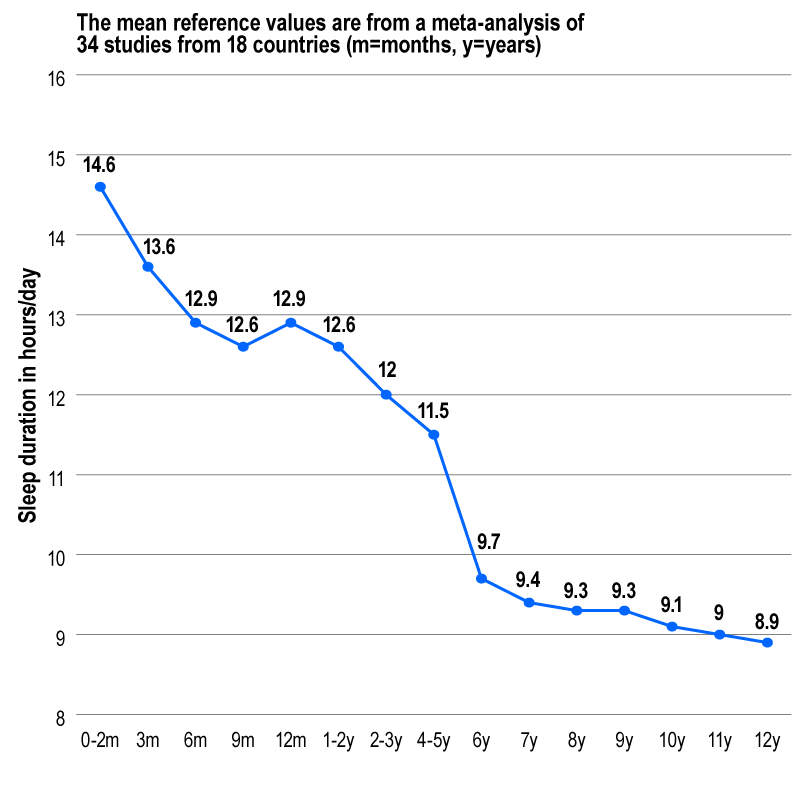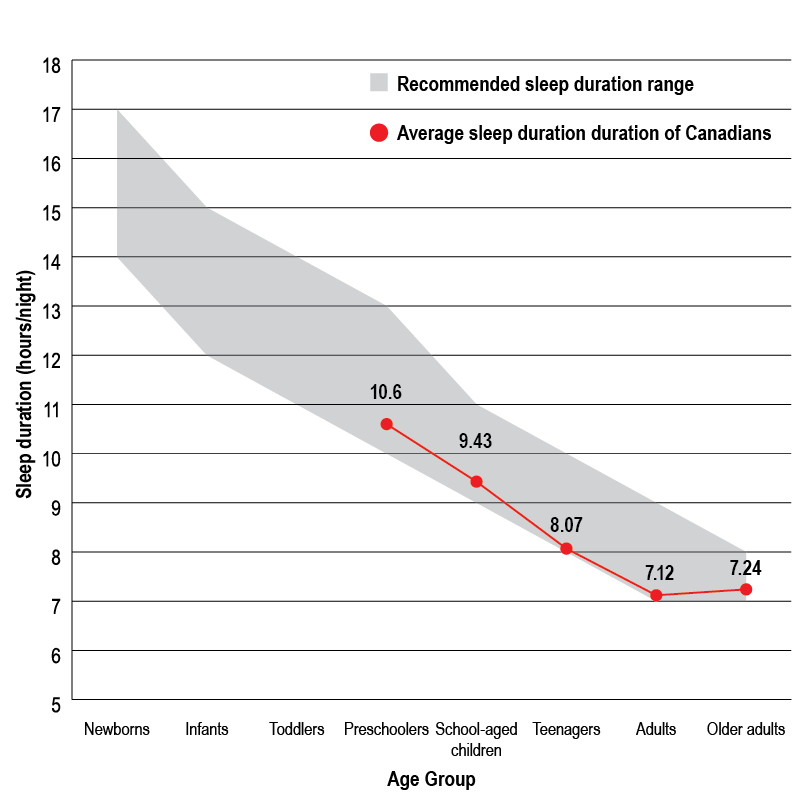Sleep duration varies widely across the lifespan and shows an inverse relationship with age. Beyond sleep quantity, other important sleep characteristics need to be considered such as sleep quality and sleep timing (bedtime and wake-up time).
Sleep is increasingly recognized as a critical component of healthy development and overall health. Healthy sleep is made up of many dimensions, including adequate duration, good quality, appropriate timing, and the absence of sleep disorders.
Not getting enough sleep at night is generally associated with daytime sleepiness, daytime fatigue, depressed mood, poor daytime functioning, and other health and safety problems. Chronic insufficient sleep has become a concern in many countries, given its association with morbidity and mortality.
For example, habitual short sleep duration has been associated with adverse health outcomes including obesity, type 2 diabetes, hypertension, cardiovascular disease, depression, and all-cause mortality.
Normal sleep duration changes across the lifespan
Sleep–wake regulation and sleep states evolve very rapidly during the first year of life. Newborns (0–3 months) do not have an established circadian rhythm and therefore their sleep is distributed across the full 24-hour day.
At 10–12 weeks, the circadian rhythm emerges and sleep becomes more nocturnal between ages 4 and 12 months. Children continue to take daytime naps between 1 and 4 years of age and night awaking is common. Daytime naps typically stop by the age of 5 years and overnight sleep duration gradually decreases throughout childhood, in part due to a shift to later bedtimes.
Normal sleep duration data across age categories are shown in Figure 1. A strong inverse relationship with age is evident from these data, with the fastest rate of decrease observed over the first 6 months of life (10.5 min/month decrease in sleep duration).

Figure 1: Normal self-reported sleep durations in children aged 0–12 years. The mean reference values are from a meta-analysis of 34 studies from 18 countries. (m=months, y=years).
The sleep recommendations in Canada for children of all ages, also known as the 24-hour guidelines, are integrated with physical activity and sedentary behaviour recommendations, putting more emphasis on the overall pattern of behaviours for a healthier 24-hour day, rather than isolating individual behaviours.
The average sleep duration of Canadians by age group (Figure 2) is situated at the lower border of the sleep duration recommendations. On average, a large proportion of Canadians meet the sleep duration recommendations (two-third of teenagers and adults). However, a large number of individuals fail to meet the guidelines (one-third of teenagers and adults). The teenage group has shown the greatest rate of decrease in sleep duration in past decades, especially on school days.

Figure 2: Sleep duration estimates of Canadians (dashed line) compared with the sleep duration recommendation ranges (solid lines). The % of Canadians sleeping less than recommended for optimal health is estimated at 16% for preschoolers, 20% for school-aged children, 30% for teenagers, 32% for adults, and 31% for older adults.
In conclusion, there is no one simple magic number for optimal sleep, as it is influenced by inter- and intra-individual factors. Often, optimal sleep is defined as the daily amount of sleep that allows an individual to be fully awake and not feeling sleepy, and able to sustain normal levels of performance during the day.
Table: Normal sleep recommendations in the US and Canada (see pdf table) AASM = American Academy of Sleep Medicine, SRS = Sleep research Society; https://www.ncbi.nlm.nih.gov/pmc/articles/PMC6267703/table/t1-nss-10-421/?report=objectonly
| National sleep foundation (US) | AASM/SRS (US) | 24-hour movement guidelines (Canada) | |||
| Age group | Recommendation | Age group | Recommendation | Age group | Recommendation |
| Newborns (0–3 months) | 14–17 hours | Newborns (0–3 months) | Not included | Newborns (0–3 months) | 14–17 hours |
| Infants (4–11 months) | 12–15 hours | Infants (4–11 months) | 12–16 hours | Infants (4–11 months) | 12–16 hours |
| Toddlers (1–2 years) | 11–14 hours | Toddlers (1–2 years) | 11–14 hours | Toddlers (1–2 years) | 11–14 hours |
| Preschoolers (3–5 years) | 10–13 hour | Preschoolers (3–5 years) | 10–13 hours | Preschoolers (3–4 years) | 10–13 hours |
| Children (6–13 years) | 9–11 hours | Children (6–12 years) | 9–12 hours | Children (5–13 years) | 9–11 hours |
| Teenagers (14–17 years) | 8–10 hours | Teenagers (13–17 years) | 8–10 hours | Teenagers (14–17 years) | 8–10 hours |
| Young adults (18–25 years) | 7–9 hours | Adults (18–60 years) | ≥7 hours | Adults (18–64 years) | In development |
| Adults (26–64 years) | 7–9 hours | ||||
| Older adults (≥65 years) | In development | ||||
| Older adults (≥65 years) | 7–8 hours | ||||


